The early days. Not a tough guy. Trying to be one.
I grew up with lots of problems in my life. Early on, there was trouble at home. I had a big mouth. I was super opinionated. I was always shorter than the other kids and had a last name that sounded like a bottle of ketchup. I had flaming red hair.
To say I got into a few fights when I was a kid is an understatement.
I also loved mysterious things. I loved magic and spies and ninjas … Oh did I love ninjas. For awhile, those close to me thought the only word I knew was “ninja.”
This combination of things led me to have a strong interest in the martial arts from a very early age. I would work for, beg and borrow money to buy martial arts books, weapons and uniforms. I owned all kinds of swords, “ninja stars,” nunchucks, throwing knives and any other martial arts weapon I could buy, scrounge or make. I snuck around the town (unbeknownst to my family) late at night dressed like a ninja.
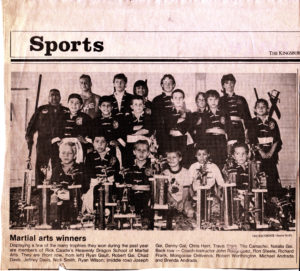
I also learned as much about the martial arts as any kid living in pre-internet America in a town with a population under ten thousand possibly could. I made it my goal to learn the martial arts. I did some Kung-fu at the local Kung-fu school but as soon as I had my own car, I would drive myself to martial arts seminars and camps to learn more. I wanted to be the most serious, tough guy martial artist I could be.
Aikido: If you get over the sissy stuff, it’s probably the toughest thing ever.
The first time I really thought about Aikido, I was talking to a priest. He had seen a demonstration of Aikido when he was younger where they had blind folded the Aikido practitioner and had some of his students try to hit him with a stick. They were, of course, unable. I was pretty impressed by the story and the idea of a system that could teach this. It’s still impressive to me, as in all my years of Aikido, I’ve never seen a demonstration like this. But I didn’t put any real interest into Aikido until I read “Aikido and the Dynamic Sphere.”
“Aikido and the Dynamic Sphere” was published by Adele Westbrook and Oscar Ratti in 1970. This book made Aikido seem both otherworldly and completely practical. It focused on not only the organization of Aikido’s syllabus (with more than 1,200 beautiful illustrations from Ratti), but also the non-physical aspects of the system. The book outlines Aikido as a system with tremendous power that comes not from muscular force or speed, but from an ingenious way of dealing with conflict. There was also some talk about morals and a humanistic approach to conflict … But if you got past all that “sissy stuff” the system sounded powerful and was just what I wanted.
The book made Aikido pop up on my radar in a big way and in the fall of 1998 the opportunity to train in Aikido presented itself and I took it. I began training in a dojo that was kind of a hybrid between Iwama style Aikido and Aikikai Aikido, with a bit of Ki Aikido thrown in for good measure. The sensei at this dojo was a former uchideshi (live in student) of Morihero Saito Sensei (head of the Iwama system) and had spent seven years training in Iwama, Japan. He was a small man with a commanding presence. His technique was praised by his peers and he could do all manner of cool martial arts stuff. I was sold.
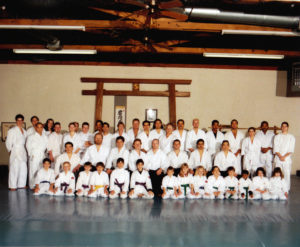
I became uchideshi at Aikido of Fresno (the very school at which I would later become Dojo Cho). For a solid year I trained at least 5 hours a day, 6, sometimes, 7 days a week. I was completely immersed in the training, taking every possible opportunity to study, learn and help.
I was ranked 3rd kyu inside of six months and tested for Shodan in less than three years. I got really good at Aikido real quickly. This padded my ego … for a few months.
Then, while minding my own business at a local drinking hole, I got into a fight. This wasn’t surprising. I had been in lots of fights in my life. What was surprising, however, was that I didn’t do Aikido during the fight. I was a freaking black belt in the art, and yet when it came down to it, I used none of the stuff I’d learn in this fight. Instead, I just kind of did what I always did growing up. Later, I thought “I should have thrown a kotegaeshi on that fool, or tossed him across the bar with a koshi nage!” So, what was wrong with my Aikido skills? The question really motivated me to figure out what was going on.
Aikido. It didn’t work. Must suck.
I began to go around to all the local martial arts schools to figure out why my Aikido didn’t work. I thought that I just needed to see some real attacks coming at me (at that time I didn’t have the language to describe “live” training). I figured I’d go mix it up with the local Karate guys, go to the boxing gym. I even went to train with the local MMA/BJJ guys (this was the first such group in my area at the time, around 2001). They all had cool stuff to offer, but none of it really fit what I was looking for.
My search for a new school ended when I found Tim Cartmel’s Shen Wu Academy in LA. Tim was a traditional martial artist who had spent twelve years in Taiwan studying Chinese internal martial arts, before moving back to the US. He then studied Brazilian Jiujitsu under first Joe Moreira and then Clebber Luciano, eventually becoming a celebrated black belt. Tim’s school had everything I was looking for; someone who had spent time with a traditional martial art, but also had practical experience in modern martial arts like Brazilian Jiujitsu and MMA.
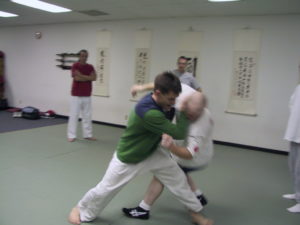
I uprooted my life and moved to Southern California to train at the Shen Wu Academy.
To say this was a humbling experience is an understatement. I was already a black belt in Aikido, I was good with my body and knew quite a bit about different martial arts. Yet everyday my classes consisted of me being easily overcome by my fellow students. I was everyone’s favorite whipping boy. I tried hard, but just didn’t have the skill set to stop any of them from manhandling me.
So, I completely immersed myself in training again, made it to every class I could, arrived early and stayed late to work with other students. My learning curve shot through the roof.
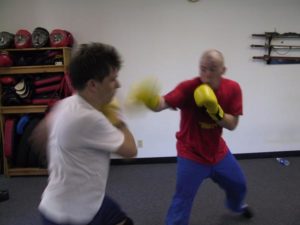
It wasn’t too long before I was tapping the other white belts out, then the occasional blue belt and before too long I was a tough roll for the purple belts. One day after I rolled (some light BJJ sparring) with a good purple belt he asked me how I got so good so fast. Tim quickly answered, “Chris already knew how to use his body. He just had to let his technique catch up.”
I was a little over a year into my training at the Shen Wu Academy. When I first got to the school, I tried some Aikido stuff, but that quickly fell away as I learned there were better ways to do things. That was one of the most impressive things about the training I was doing now; I could learn something new in class, then drill it semi-live, and by the end of the week I’d be using the technique in sparring sessions.
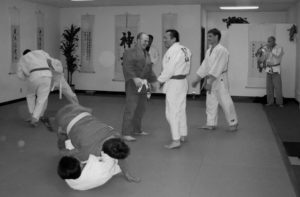
This was not the experience I had with Aikido, where I had worked on techniques for years and still couldn't pull them off. I started to think that Aikido sucked - or that it sucked for fighting at least. From Aikido, I had learned how to use my body, how to move and think about martial arts stuff, and that was nice. But I had to face the fact. Aikido simply didn’t work in a fight.
What the hell? Did that just work?
As my training in Brazilian Jiujitsu continued under Tim’s tutelage, I would also stop by Clebber’s place and roll when we were getting ready for tournaments.
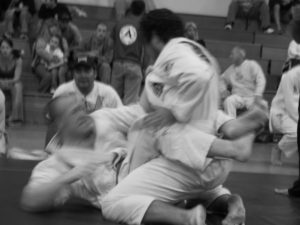
I competed in several BJJ tournaments, some submission wrestling and a small MMA event. I even had a chance to do Sumo with the Southern California Sumo group. Training in BJJ and MMA was great and I started to let go of the idea of getting anything practical out of Aikido.
I was generally eager to compete in any tournament or martial arts match that came along, so of course my good friend Maynard Anchetta suggested I go with him to a Dog Brothers Meeting of the Pack. I didn’t know what this was, but Maynard explained it as a full contact stick fighting tournament. There are almost no rules: you compete full contact, full force with rattan sticks. This sounded insane to me. What did I know about stick fighting? Maynard insisted it would be a good opportunity to try out my Aikido jo (short staff) training. I already knew how my Aikido empty hand training worked out. I couldn’t imagine how badly I would get beaten at an event like this. I told him I’d pass.
At ten a.m. the morning of the Dog Brothers gathering I get a call from Maynard.
"Hey I set up a match for you with this guy from Switzerland. He's got a Jo here and wants to fight you. I've already taken care of everything, just get down here quick."
The next thing I knew, I was getting in my car and trying to figure out how to get to El Segundo.
Maynard had fought at many events and was sure something good would come out of my attempt here, even if it was just him getting a good laugh. I figured he might get his laugh as I was pretty sure that Aikido didn’t work in “fights.” It seemed I would be easy prey for my competitor.
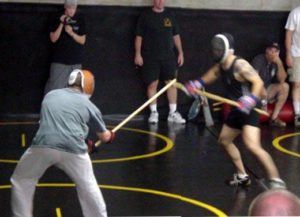
In the end, I faced a very skilled, full-fledged Dog brother and not only survived but, to my suprise, did pretty well.
During the match, all of my Aikido training in Jo work came out naturally. I understood how to distance with this guy, how to time my strikes and block, and most importantly how to read intent.
That came naturally to me … because of Aikido training? We fought hard and fast, trading blows and grappling too. During the match I hit a perfect "harai-men," straight out of Saito Sensei's third kumitachi. It landed exactly as taught in the form. I had never sparred with a Jo before, yet here I was up against a skilled stick fighter, someone who had been in dozens of stick fights, and I held my own.
So wait, did Aikido just "work?”
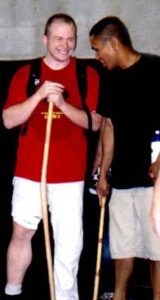
The garage days.
This experience was mind blowing. You have to understand, I came into MMA with the idea that inside of a month I’d be pulling off Aikido techniques. That didn’t happen. The things I had spent years learning and perfecting in Aikido just didn’t work in my MMA sparring sessions. Meanwhile, the MMA techniques I was learning came off beautifully, every time - with only a week of training.
It was clear to me that in the kinds of sparring sessions I was doing, Aikido didn’t work. That had been proven to me day in, day out for more than a year. But, in a stick fight, against a good competitor, at an event, all of the sudden the Aikido stuff that I had learned just came out. This seemed impossible. I had spent way more time working with the unarmed techniques of Aikido than the armed ones. Yes, I had trained full time with weapons as well as doing the unarmed techniques, but I spent about a quarter of the time on weapons training that I did with unarmed training. There was no way that I was better at Aikido weapons than I was at Aikido’s taijutsu (unarmed techniques). So how was I better at applying weapon technique than I was able to apply unarmed technique? I couldn’t let this question go. I thought about it all the time.
I stopped training with Tim. It was a very hard decision. I had learned so much from him. But I couldn’t let go of the idea that Aikido worked. I moved back to Fresno to start training Aikido again. I needed to figure this out.
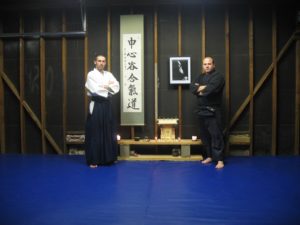
I took a position as an assistant instructor at Aikido of Fresno and started teaching Aikido in the park on the side. I didn’t manage to keep my assistant teaching position for very long, because the Aikido I was now teaching was pretty “radical." More than a few times I was caught teaching punching combinations and ground grappling. It was all too much for a traditional Aikido school. So, I teamed up with a local Aikidoist named Michael Varin, and together we formed “Central Valley Aikido.” I got a house with a full sized garage that we converted into a Dojo and we set to training and figuring out how Aikido really worked.
At times, the garage was more of a fight club than a dojo. In fact, we usually referred to it as “the garage” instead of the dojo. It was where we went to beat on each other. Lots of different people came through, but mostly six or seven of us smashed each other into the walls, trying to solve the mysteries of Aikido. At first, my attempts were at hybridising Aikido. I felt Aikido weapons “worked” and Aikido unarmed “didn’t work.” So, I set about adding all kinds of stuff to Aikido’s unarmed training. I would still teach the traditional forms, but add different punching combinations, or show how an Aikido technique might work off of a kick, or a punch from modern MMA.
This was 2006-2011. YouTube was just getting going, and there were very few Aikido people I could see doing what we were doing. I would often video our sessions and put it out for other Aikido people to discuss. The responses I got were mostly negative: “That doesn’t look like Aikido,” they would say. Or, “your Aikido is terrible. It looks so rough.” I knew that these people had never tried to do Aikido against someone who was trying to resist. Everyone criticizing us was under this delusion that if someone attacked them,
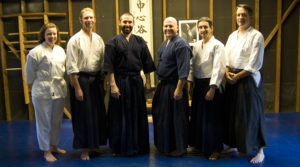
they were going to pull off this magical technique because they had done some forms. I knew for a fact they were wrong. I had this truth beaten into me over many hard hours of training. For the most part, I dismissed what they were saying as ignorance to the reality of a motivated attacker. Yet, what they said also bothered me. What we were doing had started to look less and less like Aikido and more and more like MMA.
We trained everything with vigor in the garage. We used weapons hard; we sparred with weapons, hard. We sparred unarmed, hard. This was the theme of the garage. When we worked multiple attackers, again we did that hard, and it usually ended up with the “nage” smashed up against the wall, or swarmed upon on the ground. One time, while working multiple attackers with two smaller students, both around 120 lbs, they grabbed me and took me down, ripped the weapon from my hand and won the scenario. Here were two guys, about half my size, both less skilled than me, both of whom I totally dominated when grappling individually, smashing me to the ground and ripping the weapon from my hand like I was a baby. It dawned on me that I couldn’t fight two people. From deep in my unconscious mind it came to me: “Aikido is not about fighting.” Had I been looking at this whole thing wrong?
A professional Dojo.
This realization got to me. I started listening to people who would look at our stuff and say it didn’t look like Aikido. They were right. It didn’t look like Aikido and maybe that was because Aikido wasn’t about fighting. There is an important point of clarification I need to make here. When I say that I had a realization that Aikido wasn’t about fighting, I didn’t think that Aikido was simply a wonderful philosophical way to view the world and in no way related to self defense. On the contrary: my thinking then, as it is now, is that Aikido is a way to defend yourself when someone wants to attack and harm you. That way of defending yourself just doesn’t involve fighting.
I started spending more and more class time sifting through Aikido’s forms, trying to practice Aikido exactly as it was taught to me, but now with a focus on why the forms were put together the way they were. I held weapon use and multiple attackers as my key factors and believed all forms were concerned with these factors. I realized that in multiple attacker situations grappling was nearly useless, but Anti-grappling was key. I also realized Aikido had to revolve around weapons work because that was the only way you could realistically deal with multiple attackers or anyone physically greater than you. As I was starting to put this all together a most wonderful opportunity came my way -- Aikido of Fresno needed a new Dojo Cho.
In Spring of 2011, I was informed that the current head of Aikido of Fresno was planning to leave the city, and the dojo needed a new leader. After some talks, some great encouragement from Michael Varin, and a bill of sale, it was decided that I would be that new leader.
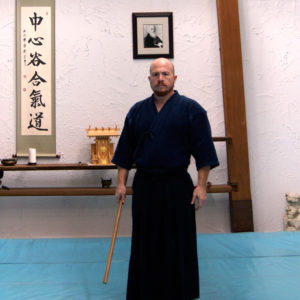
I expected to roll in there with all my new understanding of Aikido and my evolved ideas about drilling and training “what was really important” and have a hugely successful school. I was in for a surprise.
The first thing I had to come to terms with was the fact that I couldn’t be as picky about students as I once was. The dojo, and I by extension, was completely dependent on how many students would pay dues to come train. I remember distinctly a phone conversation I had with a potential student. It consisted of me telling him that he should study more about Aikido, that he didn’t know enough about it yet and that he wasn't ready for the training. One of my other students overheard the conversation and asked what I was doing. The dojo needed more students and I was scaring them all away. I realized right then that being the head of a school that was open to the public was going to be very different from the Aikido-fight club I hosted in my garage.
So, I had to learn to work with different kinds of people; people from different walks of life, whose reasons for studying Aikido differed from my own. I had to teach with more focus on them and less on myself and what I wanted to do. It was a great lesson in Aiki.
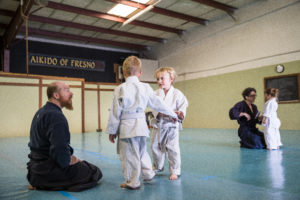
My own code of ethics dictated that I needed to teach these people what they were coming to me for -- Aikido -- and not whatever thoughts I wanted to work on at the moment. This forced me to delve even deeper into understanding what Aikido really was, and how that was of interest to the community I was serving.
Revelation.
After a few years of owning a professional Aikido school, I started to get into the swing of it. I realized that my job as Dojo Cho was to serve a community, and not focus on my own skill development. It made me a better teacher and a better martial artist and forced me to be able to understand and explain what Aikido was/is.
But I still had a problem with a few things.
The realization I had about weapons during the Dog Brothers fight was huge. It gave me the ability to start understanding why Aikido technique looked and functioned as it did. The realization I had with multiple attackers allowed me to understand the kinds of tactics an Aikido practitioner needed to use. But there were still problems I had with the system, parts I didn’t fully understand. One nagging problem I had was the Do Dori (torso grabs). They didn’t fit into the weapons work very well and it also didn’t fully work into multiple attacker stuff. It kind of made sense, but still I didn’t fully grasp it.
So, I did what I always do. I started working with Do Dori -- like, a lot. I realized more and more how the techniques could play into weapon work, and how having clear escapes from them was a must in multiple attacker situations. This led me to more clearly explore the Hodoki (disentanglement techniques), and understand their value, which in turn led
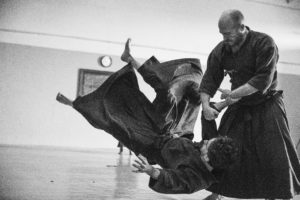
to a clear understanding of how the forms themselves were actually describing the context of Aikido.
It was something I had misinterpreted. I had always seen the forms as attempts to show us overcoming an attacker. But as I clarified my understanding of Hodoki, I could see that as a system, Aikido doesn’t want us to overcome anyone. It simply doesn’t want us to be overcome.
Aikido is about self defense and not “self offense.” Aikido, as a system, is about keeping others from hurting you. The more I explored the concept of quickly escaping a grasp, I realized the true potential of what Aikido as a system could do. And the only thing I had to change, was my own desire to be a guy who beats people up.
It is the thing that all of us learn on day one of Aikido training and also the thing that keeps coming in to mess up our understanding of the art.
All of a sudden I could see Aikido completely and I could answer, systematically and line-by-line how Aikido worked.
The point I’m making here is a tricky one. It can easily be dismissed, if you’re not paying close attention. The point I’m making is that Aikido totally and systematically works as a martial art; meaning that it is a system that can help weaker people defend themselves against bigger, more violent people. But it only works if you can let go of one thing -- the desire to “beat up” someone who is trying to harm you.
This is not a philosophical point, but a strategic one. This is the mythical Aikido concept that takes 20 years to master. In fact, it took me just about 20 years to fully understand. I remember attending a class with Robert Nadeau Sensei(a direct student of Ueshiba) in which he told a story. Ueshiba had once told him “if you could grasp the true concept of Aikido, it would only take you about three days to master the art.” Sensei Nadeau joked that he spent “over 40 years looking for those three days.”
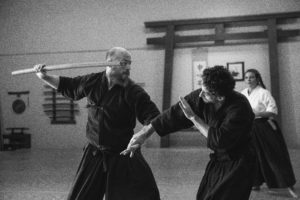
My realization is one that I believe anyone could master in three days, if they would just let themselves. It is a simple, yet totally elusive concept that has boggled thousands of Aikido practitioners.
Now what?
As a responsible Aikido teacher and student, it is my responsibility to disseminate this philosophy. So, I created a structured way to look at Aikido’s lessons and understand them through a new set of eyes. The Aikido I teach is not drastically different than that of most practitioners. There is no magic in the techniques -- the magic is in the approach, one I believe to be as completely revolutionary as it is mundane. I now spend my time trying to devise better and better ways to understand and teach this approach to Aikido.
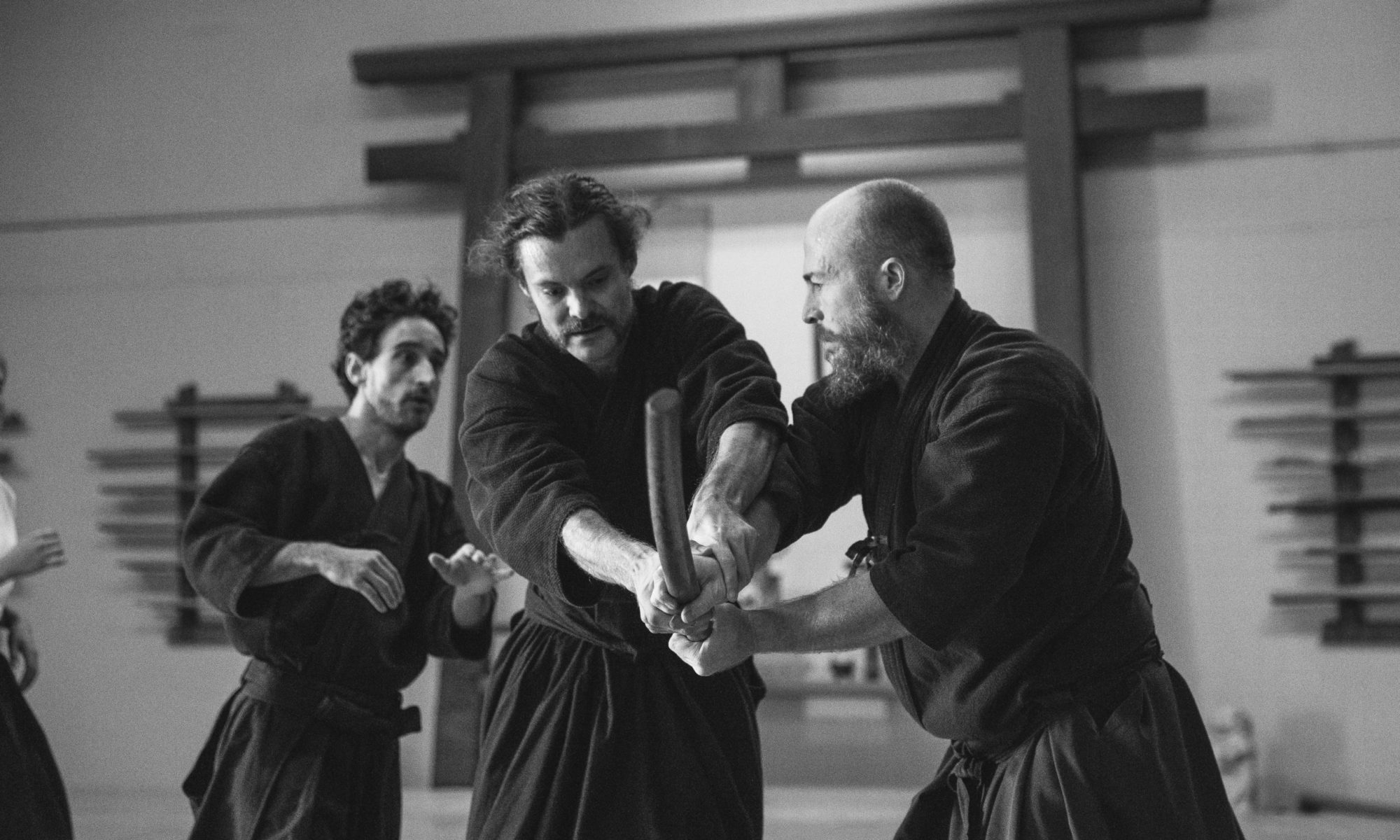
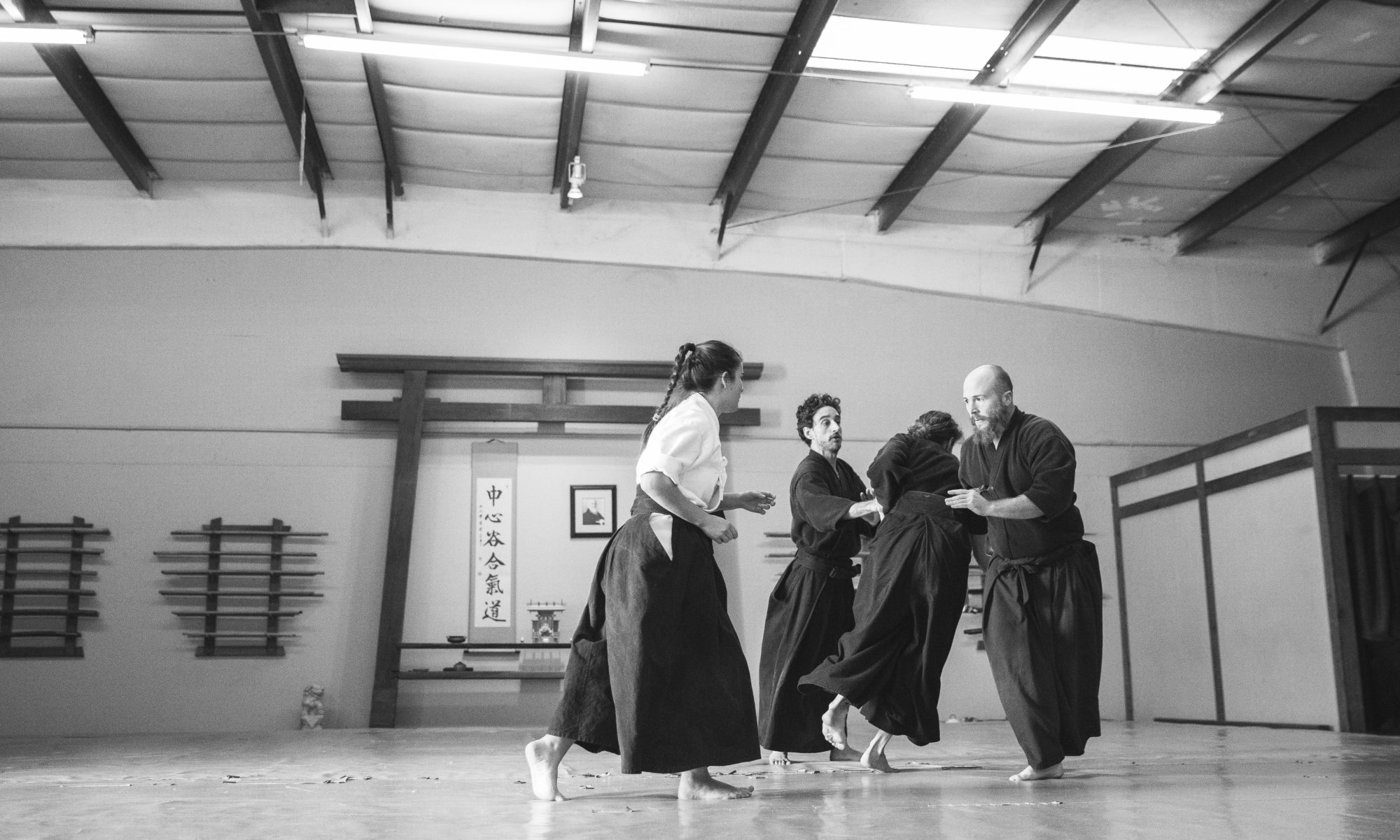
I used to walk around in ninja gear when i was a teenager too. I was 15-16 years old. Of course in the desert there’s less chance of running into a person, but a coyote or something.
Sensei Chris, great article – I read it in its entirety. I think your journey is really fascinating, and wonder if my own might have paralleled yours, had things worked out differently. I still keep tabs on the dojo and your leadership of it, and hope to stop by and train again with you and the students there. I’ve been training with a small group of talented and dedicated BJJ athletes here in Hanford, so still in the game 😉 Really hoping our paths cross again soon and I can come share in your Aikido and see if I can reconnect to mine. I hope you are doing well!
Corey Akin (your former student and training partner from back in the day!)
This was a very interesting read. I could have easily put myself in your same position and or experiences.
I also agree with your initial thinking and then, your ‘revelation’ about Aikido.
I have just ‘retired’ (not really) from Aikido, having spent 42 years enjoying it (and sometimes, not so much) but have now a much more relaxed and realistic view of what Aikido is – or can be, for many people.
It is NOT a single discipline that will appeal to all people, of all physiques and for all ages.
I handed over my dojo to a student, who was not willing to let what he’d been taught, disappear.
He has attributed his survival (almost literally) to BOTH the physical lessons AND philosophical lessons he’d taken from his training.
He is probably lucky then, that any such lesson, came nearer the end of my teaching career, where I’d failed so many times, that I’d started to better understand the techniques of Aikido….just as you are explaining above Christoper.
Thanks for your comments!